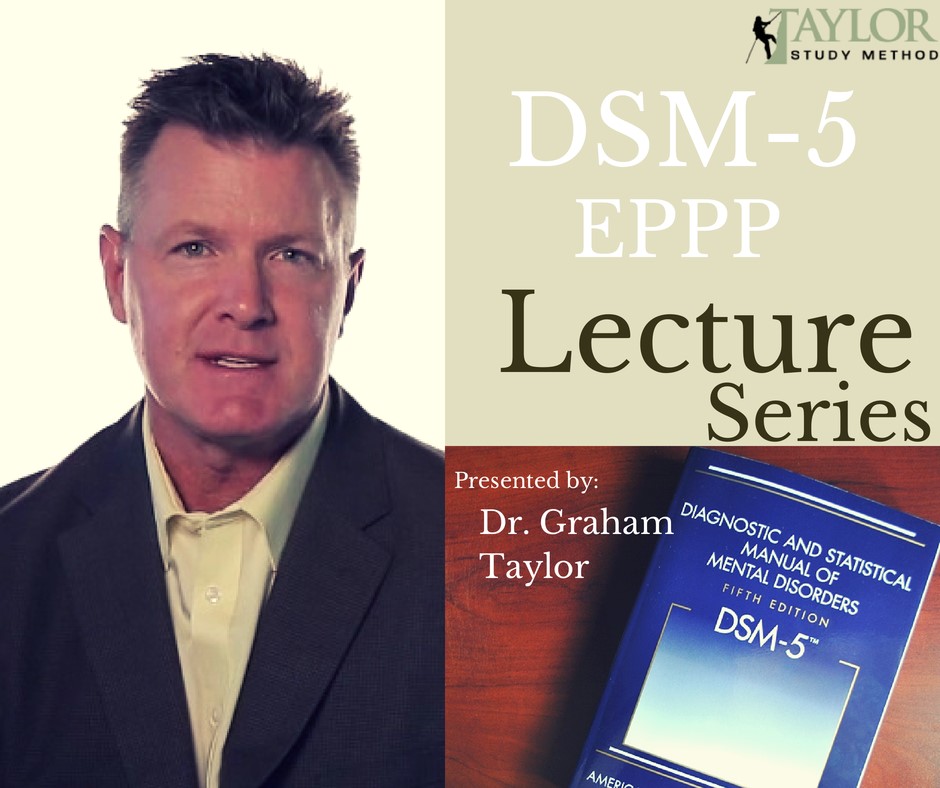The video below is the section for Posttraumatic Stress Disorder from Part 7 of TSM’s lecture series on DSM-5 and the EPPP, followed by a transcript. This lecture series aims to equip those preparing for the EPPP with everything you need to know about the impact DSM-5 will be having on the EPPP. To watch all of Part 7, click HERE. To watch earlier lectures in this series, or register for our webinar series on DSM-5 and the EPPP, click HERE.
Transcript of DSM-5 EPPP Lecture Video: Posttraumatic Stress Disorder
NARRATIVE DEFINITION:
Posttraumatic Stress Disorder (PTSD) is an Trauma- and Stressor-Related Disorder that develops in response to exposure to a traumatic event, characterized by at least one month of symptoms of re-experiencing the traumatic event; avoiding stimuli that recall the event; numbing; and increased levels of arousal. The event may be experienced personally (e.g., being kidnapped), may be witnessed (e.g., observing a violent assault on another person), or may be learned about after the event has occurred (e.g., hearing that your child has been diagnosed with a life-threatening illness). The traumatic stressor involves threatened or actual death, threatened or actual injury, threat to one’s own physical integrity, or threat to the physical integrity of another person. Continue reading

